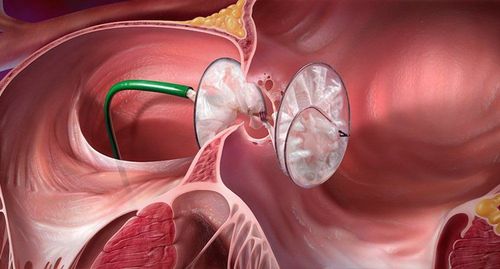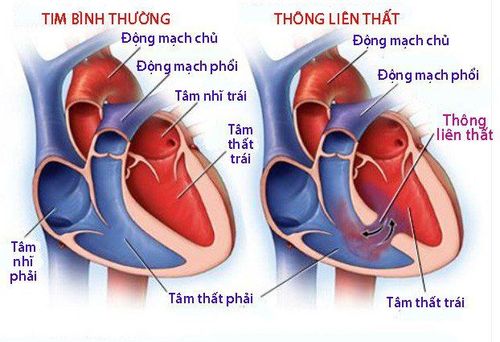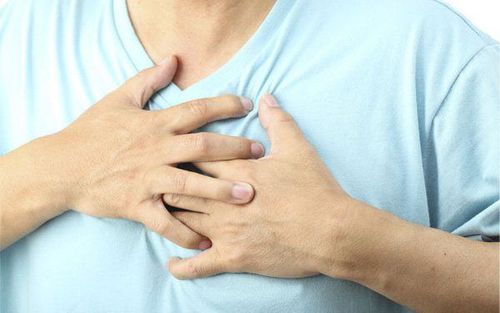This is an automatically translated article.
The article was professionally consulted by resident Doctor Duong Van Sy - Department of Pediatrics - Neonatology - Vinmec Hai Phong International General Hospital. Doctor has 09 years of experience in the field of Pediatrics.Congenital heart defects in infants are diseases that are either diagnosed before birth for severe illness or when a child grows up with some milder illnesses. Diagnosis is usually based on clinical examination and cardiovascular tests.
1. What is a congenital heart defect?
Congenital heart defects are structural problems of the heart that are present from birth. These defects can be related to:The inner wall of the heart Heart valves The arteries and veins that carry blood to or from the heart Congenital heart defects that change the normal flow of blood through the heart. There are many forms of congenital heart defects from simple malformations with no symptoms to complex malformations with severe, life-threatening symptoms.
Congenital heart defects are the most common type of birth defects. They affect 8 out of every 1,000 babies. Each year, more than 35,000 babies in the United States are born with congenital heart defects.
Many of these heart defects are easy or do not require treatment. A small number of babies are born with complex congenital heart defects that require special care soon after birth.
Over the past few decades, the diagnosis and treatment of these complex malformations has greatly improved. As a result, most children with complex heart defects live healthy lives.
Most people with complex heart defects that are difficult to treat require lifelong intensive heart care. Patients need to pay attention to health protection because it can affect employment, pregnancy, as well as other health-related problems.
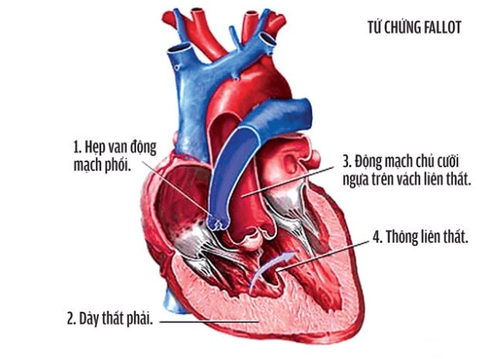
2. What causes congenital heart defects?
Genetics may play a role in some heart defects. For example, a parent with a congenital heart defect is more likely to have a child with the condition than others. In rare cases, multiple children in a family are born with heart defects.Children with genetic disorders such as Down syndrome often have congenital heart defects. In fact, half of babies with Down syndrome have congenital heart defects.
In addition, smoking during pregnancy is associated with a number of congenital heart defects, such as ventricular septal defect, atrial septal defect.
3. Signs and symptoms of congenital heart defects
Many congenital heart defects have few or no signs or symptoms that are difficult to detect with a physical exam. Some heart defects have signs and symptoms that depend on the type and severity of the disease. Severe congenital heart defects can manifest in the following symptoms:Rapid breathing Cyanosis (bluish skin, lips and nails) Fatigue Poor blood circulation Congenital heart defects do not cause chest pain or other painful symptoms. Accordingly, heart defects can cause abnormal blood flow through the heart, creating a heart murmur. It can be checked by listening to the heart. However, not all murmurs are a sign of a congenital heart defect. Many healthy children also have heart murmurs.
The normal development of the heart depends on the workload and the level of oxygen in the blood. Children with congenital heart disease may be pale and easily tired when suckling, leading to poor growth and malnutrition. Older children with congenital heart defects may be more prone to fatigue or shortness of breath with physical activity.
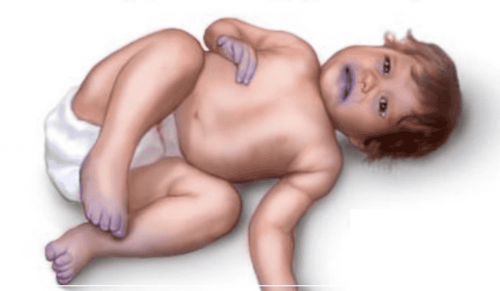
Fatigue with physical activity Shortness of breath Accumulation of blood and fluid in the lungs Fluid accumulation in the feet, ankles and legs.
4. How are congenital heart defects diagnosed?
Severe congenital heart defects are often discovered during pregnancy or shortly after birth. Some of the less severe malformations are usually only diagnosed as the child gets older. Minor malformations are usually asymptomatic. They are often diagnosed incidentally based on a routine physical exam for another reason.4.1. Who diagnoses and treats congenital heart defects? Children are diagnosed with the disease by a pediatrician who specializes in cardiology. Treatment of congenital heart defects is performed by cardiac surgeons.
4.2. Cardiovascular examination During the physical examination, the doctor will perform:
Listen to the heart and lungs with a stethoscope Look for signs of cardiovascular defects such as cyanosis (bluish skin, lips or nails), difficulty breathing, rapid breathing, growth retardation or signs of heart failure 4.3. Diagnostic test Echocardiogram: An echocardiogram is a test that uses sound waves to create moving pictures of the heart. It helps doctors diagnose and treat abnormalities in the structure and functioning of the heart. During pregnancy, fetal ultrasound is used in cases of suspected congenital heart defects. It is usually done around the 18th to 22nd week of pregnancy. Identifying the disease right before birth helps doctors proactively plan treatment.
EKG (electrocardiogram): An electrocardiogram helps to record the electrical activity of the heart. The test indicates the nature of the heart rate. It also records the strength and duration of electrical signals as they pass through each part of the heart. An electrocardiogram can detect activity in the heart's chambers, which can help diagnose heart problems.
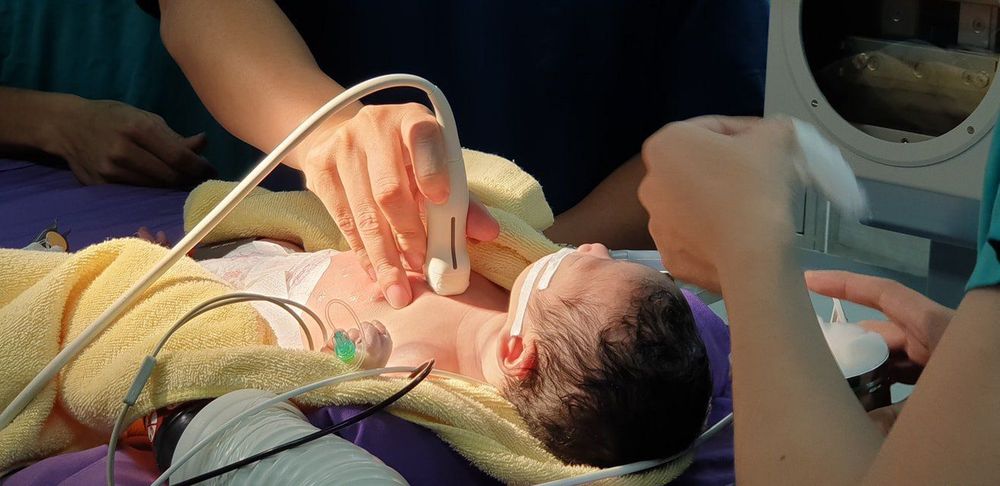
Blood gas (SpO2): Blood gas measurement helps to determine the amount of oxygen in the blood. A small sensor attached to a finger or toe helps to estimate the amount of oxygen in the blood.
Cardiac Catheterization: During cardiac catheterization, a catheter is inserted into a vein in the arm, groin, or neck and threaded to the heart. Dye is injected through a catheter into a blood vessel or chamber of the heart, allowing the doctor to see blood flow through the heart and blood vessels on X-ray images. In addition, the doctor may also use cardiac catheterization to measure the pressure and oxygen levels in the heart chambers and blood vessels. This helps the doctor determine if the blood in the two chambers of the heart is mixing. In addition, cardiac catheterization is also used to treat certain heart defects.
5. How are congenital heart defects treated?
Treatment depends on the type and severity of the heart defect in your child. Other factors include the child's age, size, and general health. Congenital heart defects are treated with cardiac catheterization or surgery.5.1. Cardiac Catheterization Procedure A catheter is inserted into the heart by inserting a needle into the skin, and then into a vein or artery. Recovery is faster because the small cut corresponds to the nature of the procedure. It is suitable in the repair of many simple heart defects such as atrial septal defect (ASD) and pulmonary valve stenosis.
For an atrial septal defect, a catheter is threaded through a vein to the septum of the heart. The catheter has a small umbrella-like device that is folded inside. Upon reaching the septum, the device is pushed out of the catheter. It is positioned to plug the hole between the atria. The device is held in place and the catheter is then withdrawn from the body.
For pulmonary stenosis, a catheter through a vein is threaded through the heart to the pulmonary valve. The small balloon at the end of the catheter is quickly inflated to push the valve "door" out. The balloon is then deflated and withdrawn along with the catheter.
Echocardiography or transesophageal echocardiography and angiography are used in conjunction during cardiac catheterization. A transesophageal echocardiogram helps the doctor take pictures of the back of the heart through the esophagus. It is also commonly used to check for complex heart defects.
Doctors also sometimes combine cardiac catheterization procedures and surgery to correct complex heart defects.
5.2. Surgery Heart surgery is needed if a child's heart defect cannot be treated with a cardiac catheterization procedure. Your child may need more than one surgery if the deformity is not completely corrected. Heart surgery is done to:
Close holes in the heart with sutures or patches Repair or replace heart valves Widen arteries or heart valves Repair complex defects related to the position of blood vessels near the heart.
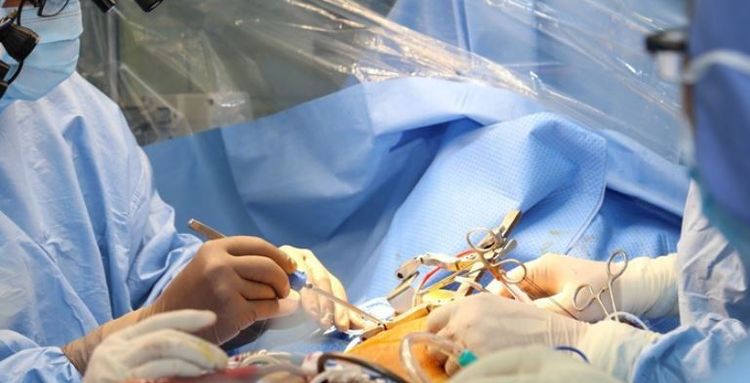
Congenital heart disease is a relatively complex group of diseases in cardiology, both in terms of pathophysiology and principles of treatment. Therefore, the significance of fetal cardiovascular examination as well as early diagnosis in newborns is extremely important, helping to detect early and intervene properly, so that the baby can have the best first days of life. and ensure long-term health in the future.
Vinmec International General Hospital currently has all the professional conditions and technical means to diagnose cardiovascular diseases early, fetal heart defects until the baby is born, besides, it also effectively implements the following procedures: Modern methods of treatment of congenital heart disease. At Vinmec, there is a team of highly qualified and experienced cardiologist specialists; modern medical equipment, up to international standards; professional service quality, helping to improve the efficiency of disease diagnosis and treatment. Especially with comprehensive strength, Vinmec has made early diagnosis and saved many lives of children with severe congenital heart defects, stabilized long-term health, and limited the recurrence of complications later on.
Please dial HOTLINE for more information or register for an appointment HERE. Download MyVinmec app to make appointments faster and to manage your bookings easily.
Reference source: babycenter.com





